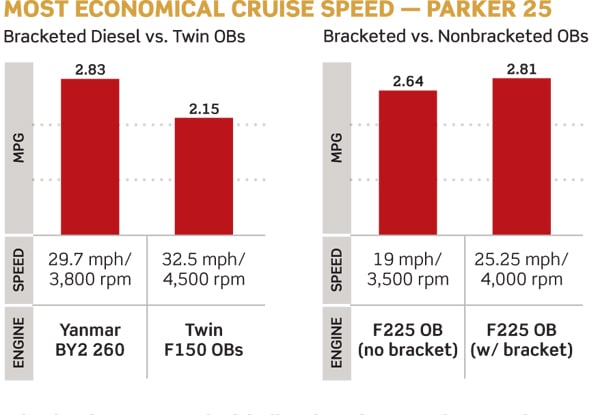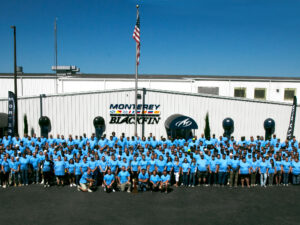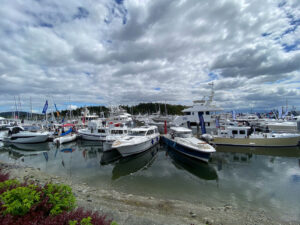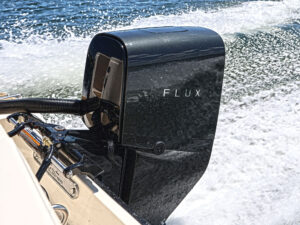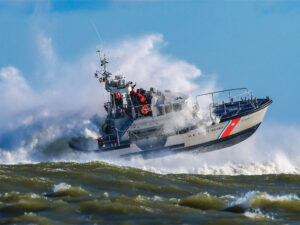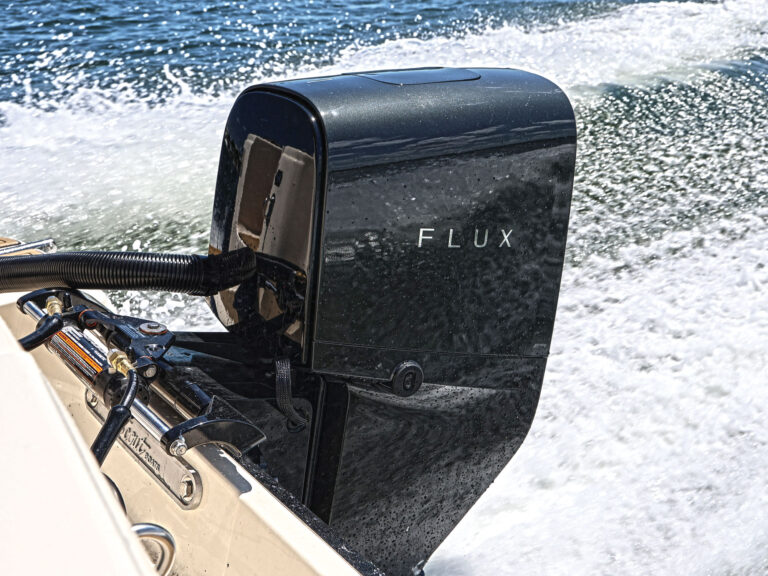One story began 40 years ago, a starry-eyed boater’s lust unrequited until Yamaha’s 350-horsepower outboards spurred him to act. Another anecdote began with new employment. A third boater’s repair-weary checkbook caused him to separate from his old outboard. All three had one thing in common: love of a boat but not its power. After repowering, all three share immense satisfaction. Is repowering practical or a romantic entanglement? A few examples help shed light on the truth.
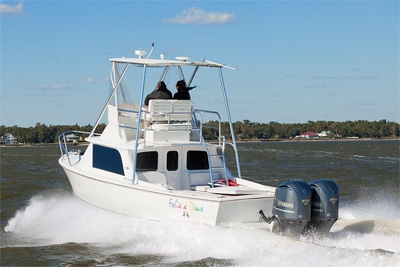
Romantic Restoration
“I always wanted two things, a ’57 Chevy and a Bertram 31,” Butch Stallings says. Four decades ago, Stallings was given the helm of a 31-footer built in the days when Bertram yachts was brand-new. Offshore one day, the weather turned. “We were all the way out at the nipple, on the 100-fathom curve,” he relates.
Stallings fell in love as that little boat ate up the stiff head sea for 40 miles back to Dauphin Island, Alabama. “It never left me,” he says. “I always had that [ride] in the back of my mind.” In June 2005, nearing a comfortable retirement, Stallings and his wife, Julia, acquired a 31 needing restoration. “I thought I’d put it [back to] its original condition,” Stallings said, but inboards would preclude keeping it behind their house and would have cramped the shallow-water cruising style the couple enjoys along Mobile Bay. Then, Yamaha released its revolutionary 350s, and, as Stallings puts it, “the light went on.”
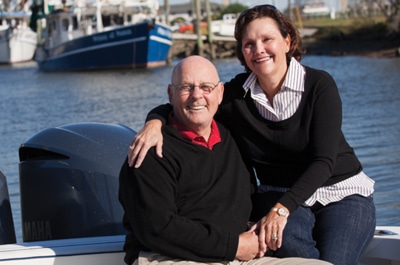
How Stallings got his wife aboard isn’t clear, but she loves the boat. “It’s little, but it’s quite a showpiece,” she says.
With considerably more cash invested than the cost of a new 34 Tiara, the couple aptly named it Folie à Deux — a rare psychiatric syndrome in which delusions are passed from one individual to another.
“It’s so different; everywhere it goes people look at it,” says Sonny Middleton, owner of Dog River Marina, the site of the boat’s restoration (dogrivermarina.com). Middleton also says twin trimmable outboards mounted aft overcame the legendary hull’s Achilles’ heel — a wet ride. The Stallings’ Bertram was gutted to a bare hull, the flying bridge was widened 18 inches, and then the boat was repainted, rewired and rebuilt with all new components.
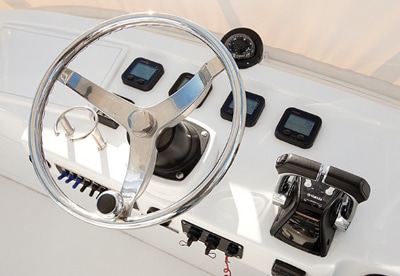
The Bertram was beefed up considerably at its aft end to be pushed from the stern, rather than from amidships engine beds. Just the repower, without the restoration, cost around $150,000.
The Stallings’ boat now offers the couple quick trips for lunch and overnights along the Gulf Coast — without worry over draft.
As for the ’57 Chevy, “I’m still on the prowl for that,” Stallings says, “a two-door hardtop with a V-8, restored to original, in aqua and white.”
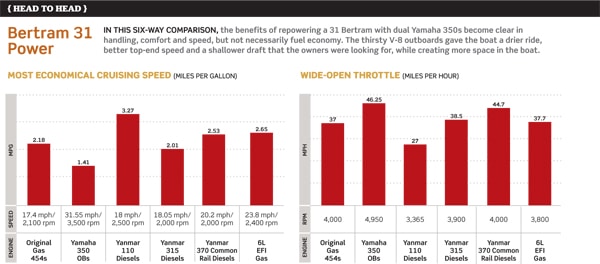
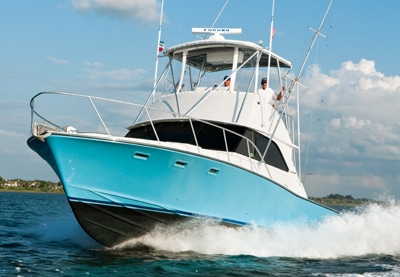
Joyful Addition
Tom Eckel owned a diesel-repair business specializing in repower projects. He’d repowered his current Bertram 38 in 1999 for its previous owner, taking it from 18 knots at wide-open throttle with a 1974 original Cummins 903 to 22-knot cruise and 28 knots top end from two 435-horsepower Caterpillar 3208 TAs. “The boat has everything we needed for accommodations and comfort; I know all the systems and I’ve been caught in some bad weather and always felt safe,” Eckel says. He and his wife, Sabina, fish off Fort Pierce, Florida, and spend weekends in the Bahamas. In 2005 Eckel went to work for Volvo Penta as an applications engineer. “I always wondered what the boat would be like with pods,” he recalls. “It’s part of my nature, being a gear head.”
With Volvo Penta’s assistance, Eckel pulled the Cats and sold them for $28,000. He reinforced the hull around the pods so as to bear the forces. Eckel and other Volvo engineers carefully calculated and retained the old center of gravity by moving the generator forward into the newly spacious — thanks to the svelte, inline six-cylinder engines — and protected engine room.
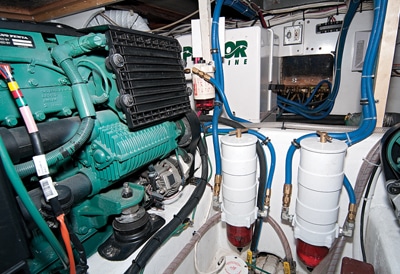
If Eckel wasn’t his own contractor and didn’t work for Volvo, he’d have invested about $220,000 for the repower in a boat worth $150,000 with the Caterpillars. A better way to look at the numbers is that he’s got a 38-foot convertible with IPS for a considerably smaller cost than what similar boats sell for used. (Eckel’s Bertram was appraised at $570,000.)
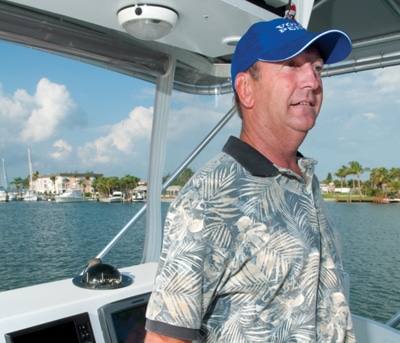
So how does Eckel’s “new” Bertram compare with the old power? “On my first Bahamas trip, I made it there an hour faster than I ever had before,” he says. “I save enough fuel on the crossing [there and back] to pay for the [$350] cruising permit.” He reports improved steering in all sea conditions and says the already nimble Bertram is even more responsive when fishing. And around the dock, “I can hold the boat side-to in 20 knots [of wind] without a problem,” he says.
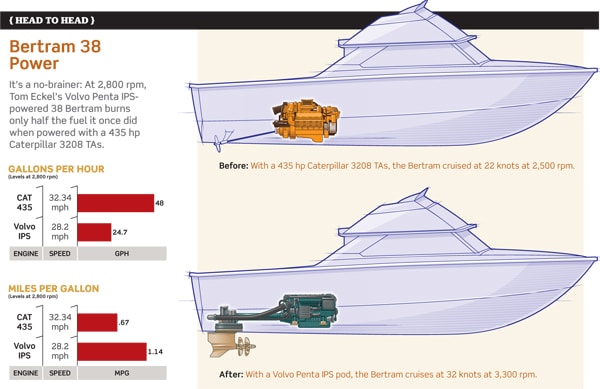
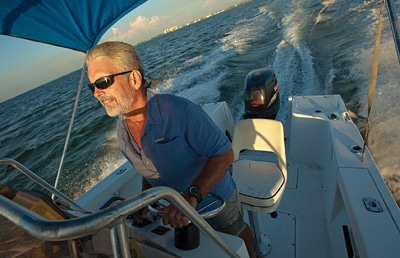
The Pragmatist
Tom Hudson purchased his lightly used 1998 Mako in 2002 and loved the hull. But its 175-horsepower carbureted outboard was a dog. Hudson, who lives a bit north of Tampa, typically runs 20 or 30 miles into the Gulf of Mexico to dive and fish. “Four people, six tanks, weight belts and dive gear, that’s right about the limit of what Mako recommends [for maximum load],” he says. “The old motor would struggle with all that weight.” Thus, Hudson restricted trips far offshore to just two divers and one driver.
Recently his motor developed serious problems for a second time, so he looked around for a new ride. In the end, Hudson concluded that “that 221 is the best all around,” so he opted to repower with a new 200-horsepower Suzuki.
The new power handles his dive crew nicely, and he burns around 30 gallons of fuel per trip, down from more than 50 gallons with the old two-stroke engine. Top speed went from 30 mph at full throttle to 35 with four people and dive gear. For his $12,500 investment, Hudson expected more power but didn’t anticipate other advantages. “Now I have a new motor, a warranty and better fuel economy. It doesn’t smell, and it’s [better for] the environment,” he says. Hudson’s only regret: “I should have gone with the Suzuki in 2004 when that first powerhead blew up.”
Yet another bonus that Hudson hadn’t anticipated was the improved drivability with new electronic throttle and shift mechanisms.
“We’d rather rig a boat with fly-by-wire shift and throttle,” says Steve Miglino, co-owner of Richey Boat and Motor (richeyboat.com) and the man who rigged the boat. Labor savings help offset the cost. “You’re cutting your pulls [from motor to helm] to just one harness, and everything is plug-and-play.” Tying a GPS to engine gauges provides readings in miles per gallon, another money saver over time.
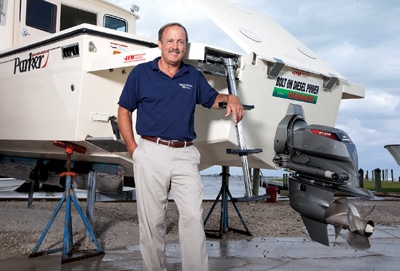
Hull Extensions
Outboard brackets like the stainless marine (stainlessmarine.com) model on Stallings’ boat have been around for years. on a Parker 25-foot, 16-degree deadrise hull, bracketed outboards running from 25 to 30 mph burn 29 percent less fuel, despite the additional weight of the bracket. “As the water moves aft of the hull, it becomes less turbulent, denser water, so the props get a better bite,” says Rusty Sedlack, vice president of Armstrong Nautical Products (armstrongnautical.com).
Need proof? With the same engine and propeller, a bracketed parker is slightly faster than a non-bracketed one, despite turning 100 rpm less. Armstrong builds flotation into its brackets to balance the engine’s weight — in essence, a hull extension engineered to be above the water when planing. Brackets add space too. Half of the extra 667 pounds of the bracketed Parker, and a good chunk of its $8,000 price, is a full-beam fish box and storage lockers not available with transom-hung outboards.
Armstrong and Yanmar partnered to create a diesel stern-drive pod that debuted last fall. Yanmar’s common rail diesels, built on BMW’s 3-liter blocks, provide 220 or 260 horsepower housed within an Armstrong bracket. Dubbed the Armstrong Yanmar Marine propulsion system (AYM), the package weighs 1,388 pounds (694 for the engine, 221 for Yanmar’s dual-prop stern-drive and 473 for Armstrong’s aluminum transom pod). That’s just 236 pounds heavier than the bracketed outboards. “This [common rail 260-horsepower] engine allowed us to do this project,” says Tom Watson, who manages the Marine Engine Division for Yanmar America Corp. (yanmar.com). “We couldn’t have done it with our mechanical engines. The system brings a diesel replacement for outboards to both new boats and repowers.”
